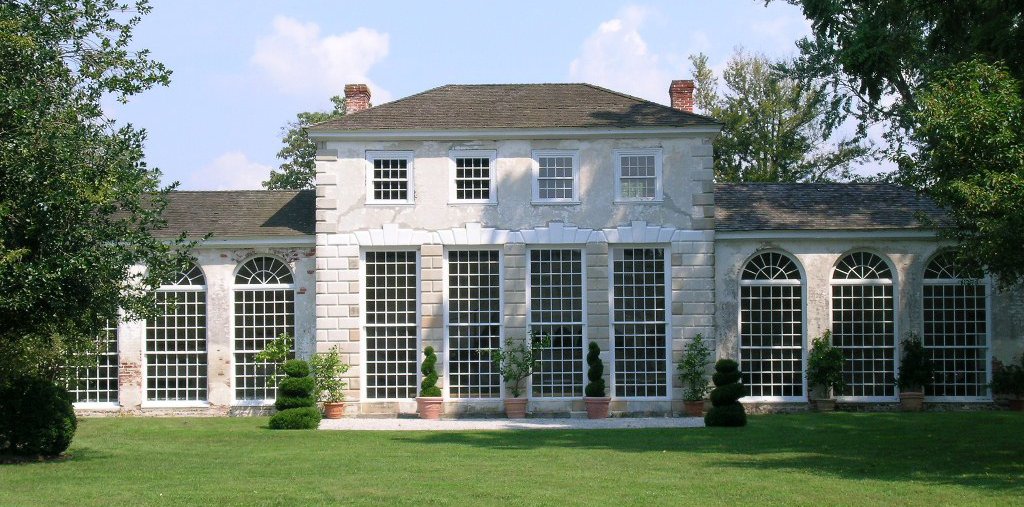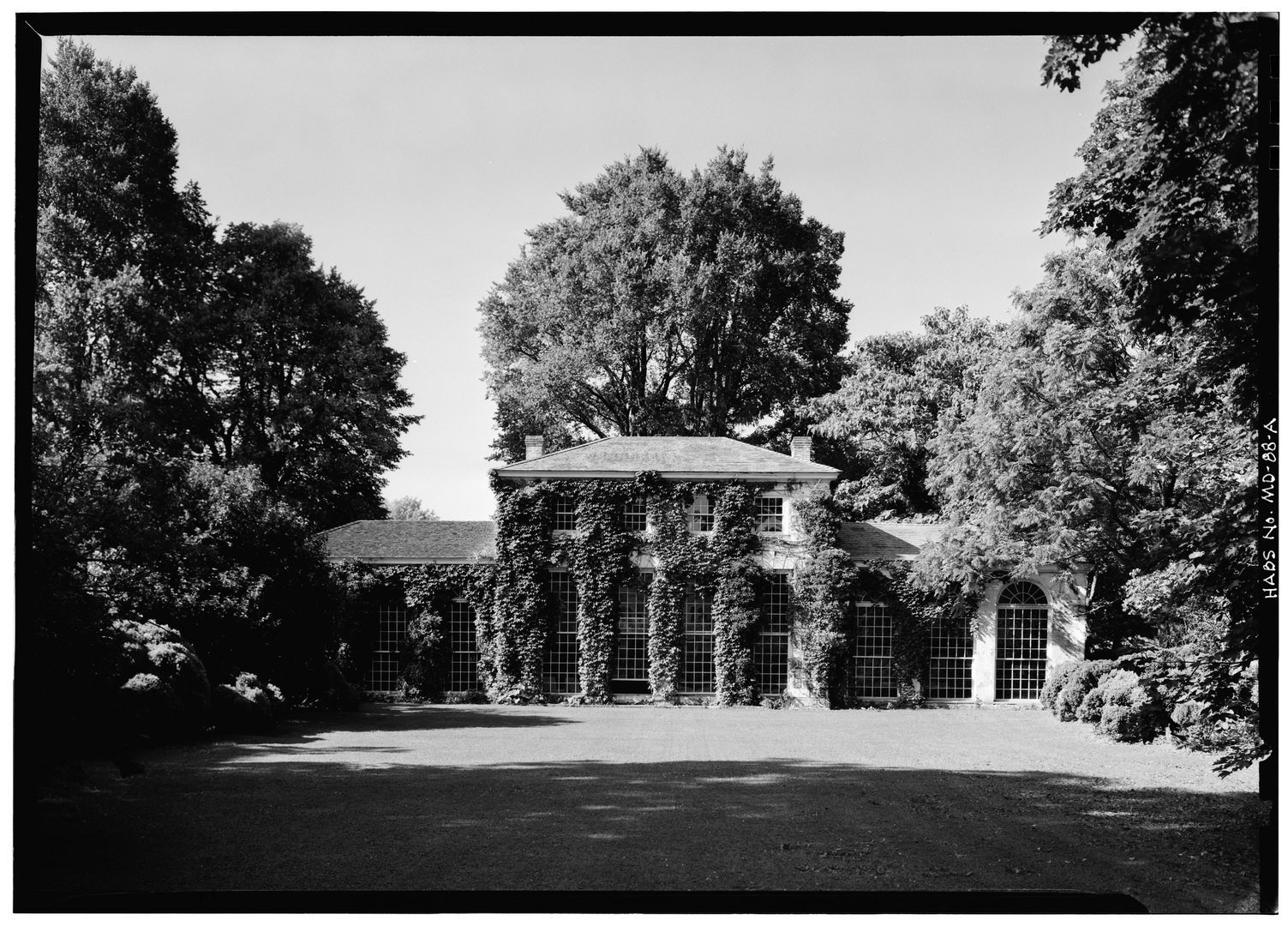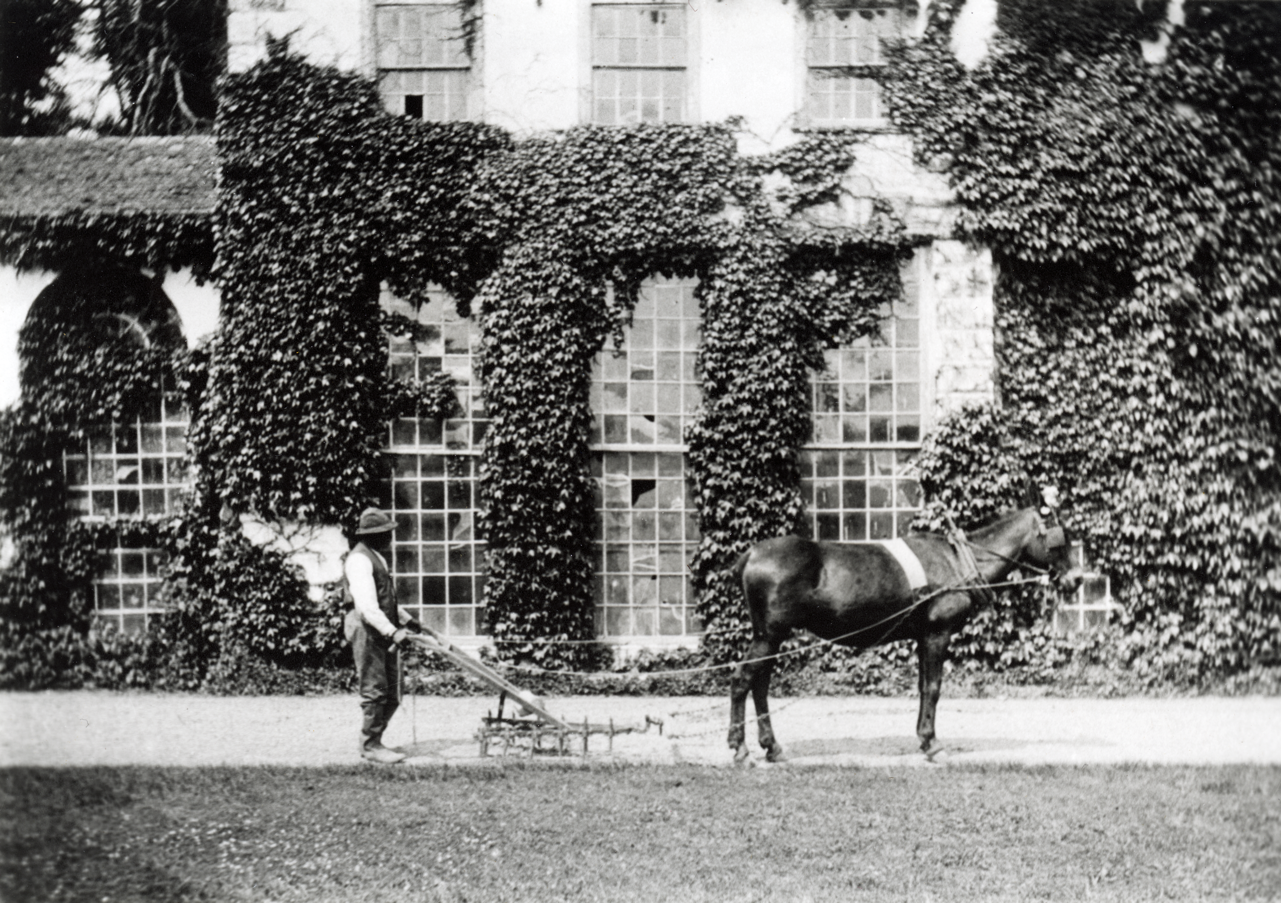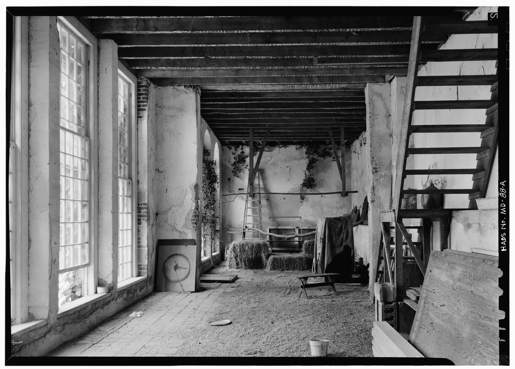
Wye House Orangery
Maryland, 1785
Wye House is a former plantation, aptly located on the Wye River on Maryland’s Eastern Shore. During the late 18th century and 19th centuries, the estate was popular for its finely manicured gardens and stunningly bright orangery. It is believed to be the last orangery of its kind still standing from the 18th century.
Edward Lloyd I, a Welsh Puritan, established Wye House in the mid-17th century after he purchased 3,500 acres of farmland along the Wye River. The Lloyd family heavily depended on an enslaved workforce to build the family’s fortune by raising livestock and growing corn, tobacco and wheat, according to the National Gallery of Art. In fact, famed journalist and abolitionist Frederick Douglass was an enslaved child at Wye House in the 1820s. Wye House, at its largest, had a claim on 42,000 acres, all of which was worked by more than a thousand enslaved men and women.
The plantation remained in the family for generations. Edward IV inherited Wye House from his father, Edward Lloyd III and immediately began modernizations. He commissioned an orangery measuring about 85 feet long and two storeys tall. The feat was completed around 1775. Brick walls in the orangery are covered with rusticated stucco to mimic stonework, while tall Palladian windows allow visitors to scan the full space with open sight lines.
“The south-facing building features a hip-roofed, two-story main room lit by triple-hung windows symmetrically flanked by two wings, each penetrated by three arched windows,” writes authors Alan Stein and Nancy Virts in their recent book The Conservatory: Gardens Under Glass. The orangery did, however, feature an advanced (for the time period) climate control system that used hot air ducts under the floor to maintain the internal temperature.


Harrison Roberts, formerly enslaved, near the Greenhouse, c. 1900. Courtesy Library of Congress.

Interior of Wye Greenhouse, c. 1930. Courtesy Library of Congress.
“The south-facing building features a hip-roofed, two-story main room lit by triple-hung windows symmetrically flanked by two wings, each penetrated by three arched windows,” writes authors Alan Stein and Nancy Virts in their recent book The Conservatory: Gardens Under Glass. The orangery did, however, feature an advanced (for the time period) climate control system that used hot air ducts under the floor to maintain the internal temperature.
The Lloyds sourced many plants from England and connections with Annapolis-based physician Upton Scott. Scott often could connect the Lloyds with the Royal Botanic Gardens at Kew Gardens to discuss plant specimens and occasionally purchase. A hothouse existed on the property of Wye House from 1784- 1830s. The hothouse served to incubate plants while they grew through the winter season. Once the orangery was outfitted with hot-air-duct heating and a water pump for irrigation, the hothouse became unnecessary.
Extensive archaeological investigations on the house, orangery and overall plantation have recently been conducted. Archaeological findings from the orangery show there was a slave quarter in the northwest that likely housed enslaved workers who ran the greenhouse between 1790 and 1840. A recent study using fossilized pollen unearthed how enslaved workers in the orangery would eat the produce being grown along with growing some of their own.
Today, the orangery and all of Wye House is a designated landmark.
Photo Credit: Library of Congress

